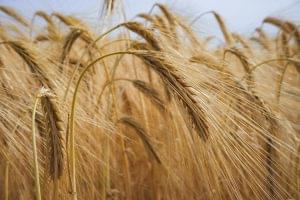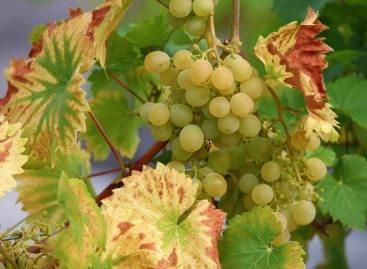Report on the 2022 corn seed situation
The 2022 corn cultivation and seed propagation were basically determined by the lack of rainfall and the heat. In some regions, after July 2021, there was no significant rainfall during the growing season of the corn plants. In 2022, the entire spring and summer were extremely dry, especially east of the Danube, and it was practically only due to the cooler April that the corn crops did not germinate and the corn crops were able to be somewhat fertile.

The office regularly checks the situation of the ear crop and seed propagation (Photo: Pixabay)
The planned national sowing area of winter wheat was 960,000 hectares, but only 933,000 hectares of this was realized and only 846,000 hectares were harvested. The situation was similar in the case of autumn triticale, only about 67 thousand hectares of the 75 thousand hectares sown were harvested. In the case of the other winter ear crops, there were no such problems, the winter barley sowing area has been increasing for the third year now, approaching 313,000 hectares in 2022, and the rye sowing area also increased slightly, reaching 32,000 hectares. The area sown for spring barley and oats decreased or stagnated, both being 21,000 hectares in 2022. As a result of the months-long drought and heat wave, the ripening accelerated, so that the harvest could practically start two weeks earlier than usual. The national yield averages were 0.5-1.5 t/ha below the average of previous years, but in the eastern part of the country, only half to two-thirds of the usual yield per hectare was harvested! The use of metal-sealed seeds among corn growers has shown some growth in recent years, but this year’s weak economic year and the drastic increase in the price of seeds (and other input materials) may result in a shift away from metal-sealed seeds.
The size of breeding areas has decreased
The size of the seed-producing area of the most important winter eared species has permanently moved from the low point in 2017, in the case of winter wheat, compared to the record area of 2020, it decreased last year and this year as well, but it still exceeded the average of the previous years, the Barley breeding area has shown continuous growth in recent years. With minor fluctuations, overall relative stability was observed in the development of areas growing autumn triticale in recent years, however, a significant decrease occurred in the last two years. In previous years, the size of the spring barley seed propagation area stabilized at around 1,200 hectares, but this year there was a significant decrease (821 ha), as was the case with the sand oat (1,964 ha) and spring oat (483 ha) propagation areas.
The number of varieties is constantly increasing
In contrast to the decrease in seed-producing areas, the number of varieties included in propagation has generally been steadily increasing since 2004, although in the case of winter wheat there was a significant drop this year, while 194 varieties were propagated in 2020, and only 174 varieties were announced for propagation by 2022. In the case of corn seed propagation, we can deduce from the ranking of the varieties which varieties are the most common in public cultivation. In the case of the most important eared species – based on the reported breeding areas – there were no significant changes in the leading edge. Between winter wheats and barley, the leading position has been unchanged for two years now, with Mv Nádor (22.79%) and SU Ellen (33.49%) at the top, confirming their market leading position, on the podium in the ranking of wheats, Falado, barley among them, Jakubus is the 2nd, with a territorial share of 6.08% and 12.46%, respectively. Mv Ménró (5.54%) and KWS Meridian (5.63%) could stand on the bottom step of the podium. For autumn triticale in 2022, Hungaro jumped to the top (13.01%), GK Maros was 2nd (12.647%), GK Szemes (9.81%) was 3rd, while Mv Talentum was 4th (6.87%), the role of Hungarian varieties is therefore still decisive.
Based on the yield data received so far, it can be stated that the drought practically tore the country in two, in the eastern part of the country affected by the drought, the average yield of seed-producing fields was poor, sometimes average, while the average yield of the western counties can be classified as good or excellent. The drought also highlighted the agrotechnical, variety selection and pre-crop effects. Although overall, there may not be a serious shortage of rye seed in the fall of 2022, seed stocks of certain more sought-after winter wheat, barley and triticale varieties may run out prematurely.
Nébih
Related news
Safe holiday preparations: food safety tips for your Christmas menu
🎧 Hallgasd a cikket: Lejátszás Szünet Folytatás Leállítás Nyelv: Auto…
Read more >Layers of problems
🎧 Hallgasd a cikket: Lejátszás Szünet Folytatás Leállítás Nyelv: Auto…
Read more >Increased laboratory capacity to combat grapevine golden yellow disease
🎧 Hallgasd a cikket: Lejátszás Szünet Folytatás Leállítás Nyelv: Auto…
Read more >Related news
Christmas shock in commerce: for the first time, we can pay with bank cards in fewer places
🎧 Hallgasd a cikket: Lejátszás Szünet Folytatás Leállítás Nyelv: Auto…
Read more >Hungarian Confectionery Manufacturers Association: trends in 2025 and prospects for 2026
🎧 Hallgasd a cikket: Lejátszás Szünet Folytatás Leállítás Nyelv: Auto…
Read more >Most grocery chains will be open until noon on December 24th
🎧 Hallgasd a cikket: Lejátszás Szünet Folytatás Leállítás Nyelv: Auto…
Read more >






